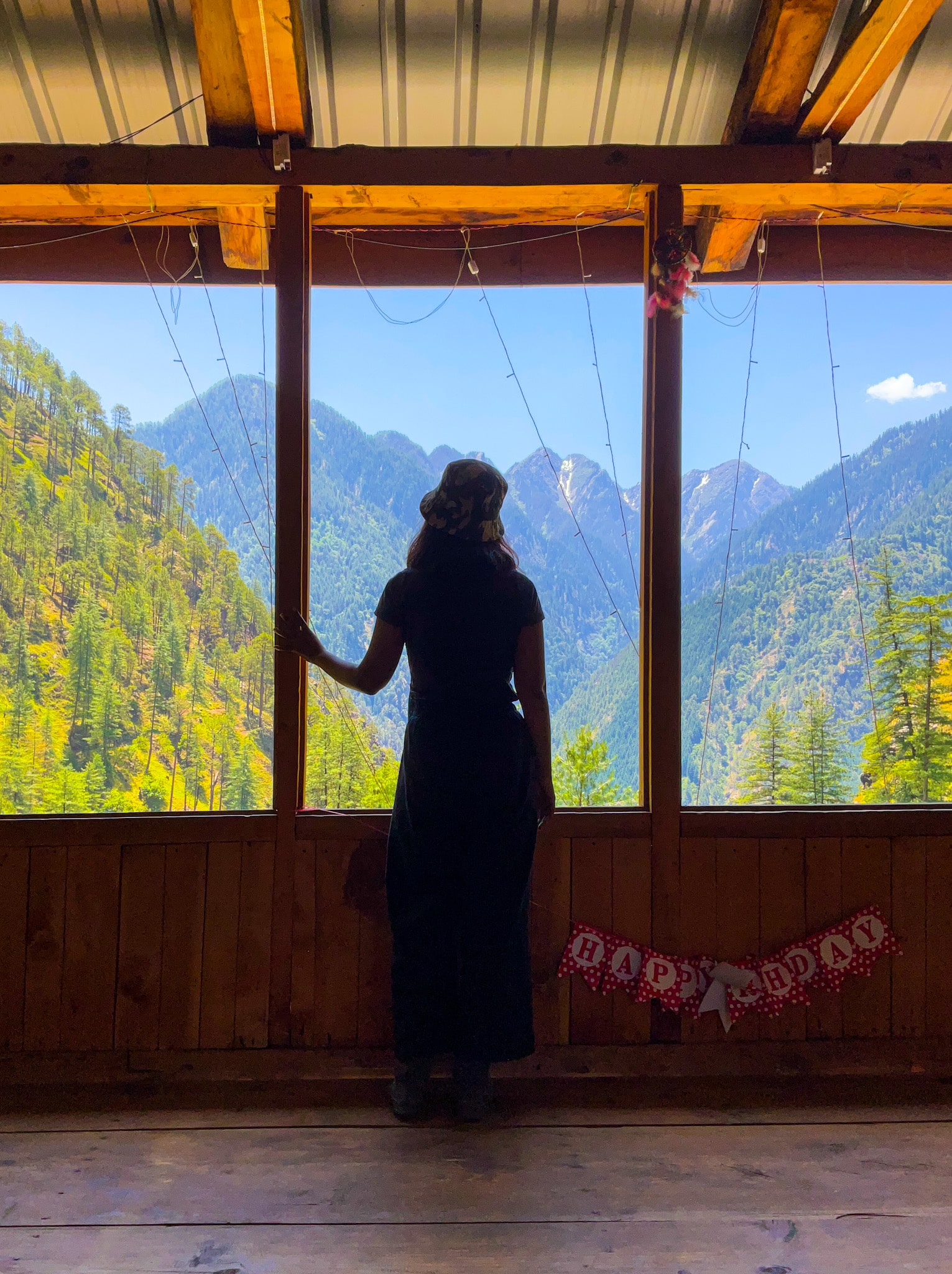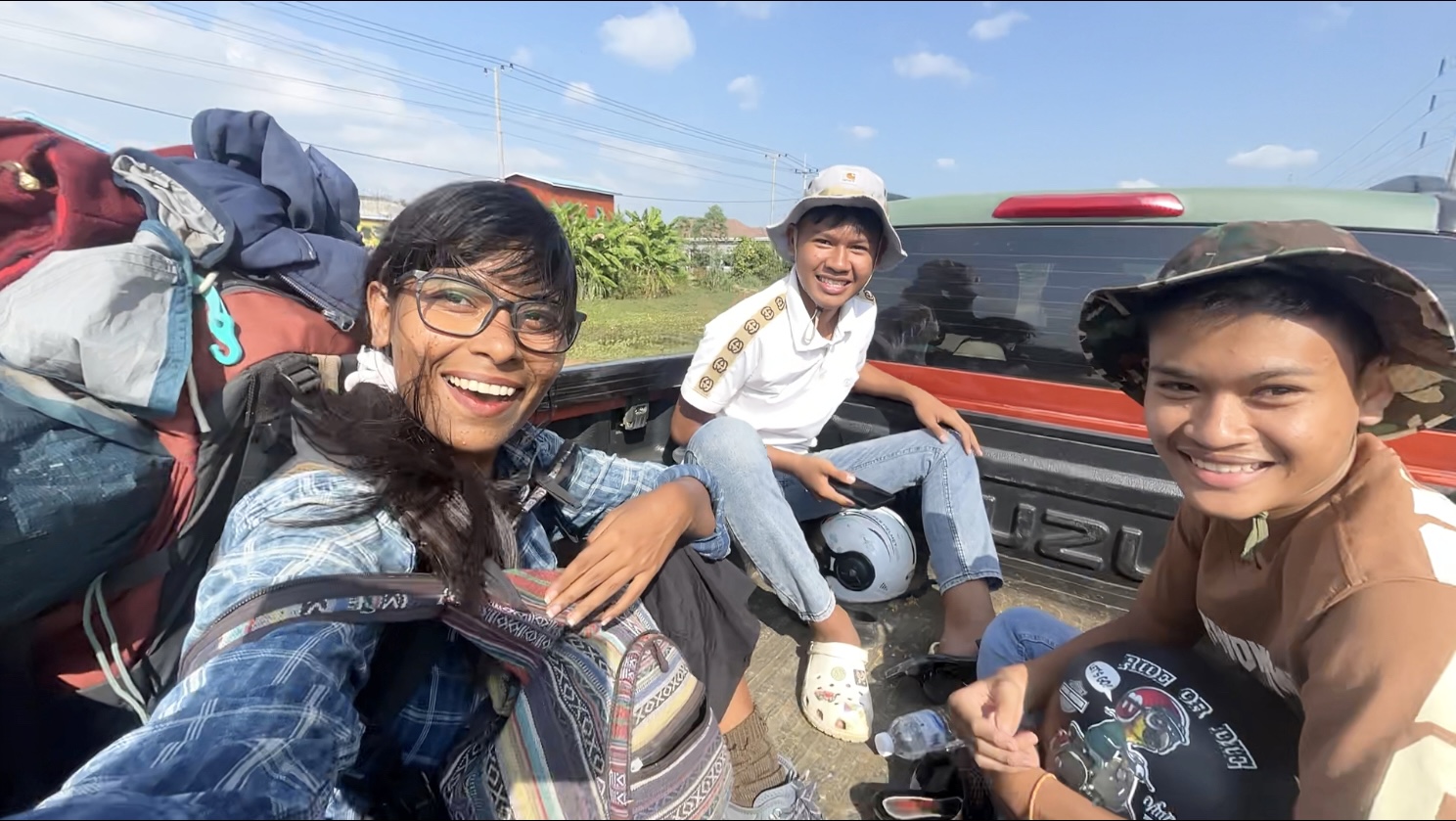Rasol and Stona – let’s explore the hidden villages in Parvati Valley. Both of these villages are a hike away from Kasol and are alive in their own distinct stories.
The skin around his hind leg has distorted to a pink misshapen hole. The redness presses in the inner meat, exposed to thick and thin wind. Marlboro cripples on the front leg… Wounds are annular in line. Marlboro, black with white long patches around the highlighted belly. The dog with a dual personality.
With the wounds scratched across his body, he jumps over the wired boundary that separates the property from the slope to the main trail. I shoo him away. He shouldn’t hike with me in such conditions! But when did he ever listen to anyone?
‘One time he brought a cooker with his mouth. Rice was still cooking inside’.

The village trail to Rasol is right behind my one-off place, Moh Maya Resort, where Shobhendra and his wife Sunita are hosting me for a month. Shobhendra is from Prayagraj, married to a beautiful Himachali woman from Shimla. We sow seeds of bitter gourd, chillies, and flowers on the lawn, drawing momentary peeps at the snowy mountains, the grey sombre peak in snowfall, and we know it’s a matter of time before the raindrops would slosh about under the light-footed Parvati Valley.
Also read – Connecting with Himachal through Village Kulthi in Tirthan Valley
Trek to Rasol – The Secluded Village in Parvati Valley
I managed to distract Marlboro. He gets engaged with some wild leaves, chewing them to stems, and I brace up, turning my head from time to time to ensure that he doesn’t follow me. Marlboro is a hard nut, but I cracked it.
Chalal is what you would call the base of the Rasol trek, and this famous village in Parvati Valley hardly connotes the rural vibrance, with its array of homestays and cafes at no apparent gap. ‘Do you have a lighter?’ Asks the man at the café, ‘No!’ ‘Do you not smoke?’ In disbelief, ‘No’. He pauses for a second, shaking, ‘Lighter?’

‘Magic Rasol’, written in huge block letters on the rock. Yes, the Charas that is famous in Parvati Valley is called Magic Rasol, considered to be the second-best after Malana Cream.
What better incentive for tourists to leave their footprints on the villages of Parvati Valley than the organic Charas, the notorious Malana Cream, and all its class I, class II deviants! For a beginner’s price of Rs. 2000 per tola, small chunks of Hash Brownies for Rs. 500, and Malana Cream selling at obnoxious amounts of Rs.10,000-25,000, Parvati Valley thrived on incentives; an impetus that skipped a beat of the green-current Parvati River.
Punjee is a local game similar to chess but up to four people can play the game at a time, and players have to toss a bunch of half-cut bamboo sticks to determine how many times their coins would move.
Rasol. Wooden houses in three-four tiers with no more than 75 families. The open-air and pop-up colors stand out from mid-way, the traditional wooden houses of ‘Kathkuni’ architecture, the rows of big stones and wood beams, and triangular slate-furnished sheets on top. The stoned sides of the alleyways almost touch the brims, and even in that narrowness, a flattened line of water-streak follows through the trails. It’s hard to believe that the folks of Rasol have settled a full-fledged village in Parvati Valley at 3048 m, which demands hiking up and down the 6-km steep trail to and fro Chalal. Almirah and heavy sacks with all things necessary weigh on their backs, supported by the ropes around their head…. They cross the bridges, bypass the waterfall, and head home.

The village sits on a slope. Before erecting a house everyone has to build something called a`Danga’, a flat platform around the edges.
Animal horns ornament the right wall of the two-storey wooden-brown temple of Renuka Mata, the mother of Rishi Parshuram and the wife of Rishi Jamdagni. The horns are at least 10-20 years old. The branch-shaped long white horn is placed aligned with the mid-symmetry, just above the red clothes. Only a new clock brings resonance to the stealthiness of all things ancient-looking. Branches hang in one or two from the first floor-top, onto the Himachali men playing cards and Punjee. Punjee is a local game similar to chess but up to four people can play the game at a time, and players have to toss a bunch of half-cut bamboo sticks to determine how many times their coins would move.
Somehow all their coats are matty-brown. They weave their own coats.

Touch is forbidden. An outsider cannot touch anything local in Rasol. A fine of Rs. 5000 hangs over the head of an outsider who happens to touch or cross the boundaries of the temple.
-‘Only the locals can touch?’
-‘Yes, only the people of Rasol and Malana.’
-‘Why?’
-‘We don’t know. That’s the way it is.’
They didn’t reveal much and kept to themselves. While researching the ‘why’, I came across this piece of article. But I believe there’s more to it.
‘I asked one of the brothers about their untouchability code, measuring my words with caution careful not to let them feel that I was ungrateful or dissatisfied. I understood that untouchability, or considering outsiders to be untouchable, was something that had been introduced only recently. Seeing the damage that had been caused to lower villages like Kasol and Tosh in Parvati Valley because of drug addiction brought in by visitors, the natives of Rasol had decided that it was best to keep away from tourists inviting only very trusted people into their homes. I was untouchable in this pure land. It was confusing because on one hand they were welcoming and generous and on the other, they didn’t want any sort of physical contact with me.’ (Reference: Living with the Charas Farmers of Rasol).
Also read – Ways of Rural Chamba – Culture, Wildlife And the People
Stona – A Village Inhabited Only by Two Families

The grandfather bought lands in the midst of the misty pine forest, near an isolated mountaintop. Nothing breathes except for the meandering rugged jungle-aura, and the occasional visits of bears. Why did he buy land here? Only he knew! Maybe he was farsighted. He raised his three sons in Chawki, a village near Malana in Parvati Valley, and the land sat on its own for ten years.
We sow seeds of bitter gourd, chillies, and flowers on the lawn, drawing momentary peeps at the snowy mountains, the grey sombre peak in snowfall, and we know it’s a matter of time before the raindrops would slosh about under the light-footed Parvati Valley.
The middle-son rolled the joint, his cheeks ballooning back to the thin layer of skin. He swings his head in disapproval. ‘In the last two years, the villages in Parvati Valley have changed. People suddenly have money. They are rich from the hash-trade. Before we used to have a different kind of environment. Full power! Now nobody cares.’
Tired of their life in Chawki and lost after being sacked from his job (for too much drinking), he found his purpose in developing the banjar (uncultivated) land, his last resort. He along with his wife and a son grows tomatoes, corn, kidney beans, and self-sustaining vegetables.
Two families. Yet they don’t get along. The other family lives in Chalal throughout the clock-year. One of their family members keeps guard from time to time. Rumor has it that these two families are actually one big family in dispute.

‘Things are so peaceful here. Farming takes the whole day, all the hard work goes into it. We never wanted to make it a homestay. Trekkers just happened to hike up here, and they loved it here’. The father is jovial in his stories, spilling words without intermissions, on a roll with the narratives. His wife puts the hot plate of Rajma-Chawal on the lower bench and fixes the spectacles on her radiant face. The rajma from their farm.
They worship Jagadambi Rishi (the same in Rasol as well), the Goddess who doesn’t like high-pitch noise Parvati Valley is so being contaminated with. They don’t hold parties in their village.
He is a storyteller, I think to myself. So is the son whose stories of spending 17 nights exploring the upper forest, chasing the bears away with fire, and the insights into land-leasing and Charas-farming made me forget time until the sky bawled, and I remembered I should get back to Katagla.
Parvati Valley is notorious for drug-addiction and Charas-dealing. Organic Charas-growing is a trade of the villagers in Parvati Valley, gravitating tourists to places like Kasol, Rasol, Malana and Chalal. It’s up to the beholder what to behold.
Would you explore these hidden villages in Parvati Valley?
Support my solo adventures across the globe by joining the Patreon community!
Live the Adventure
Get weekly articles delivered to your doorstep and stay up-to-date with my new travel stories.





Leave a Reply